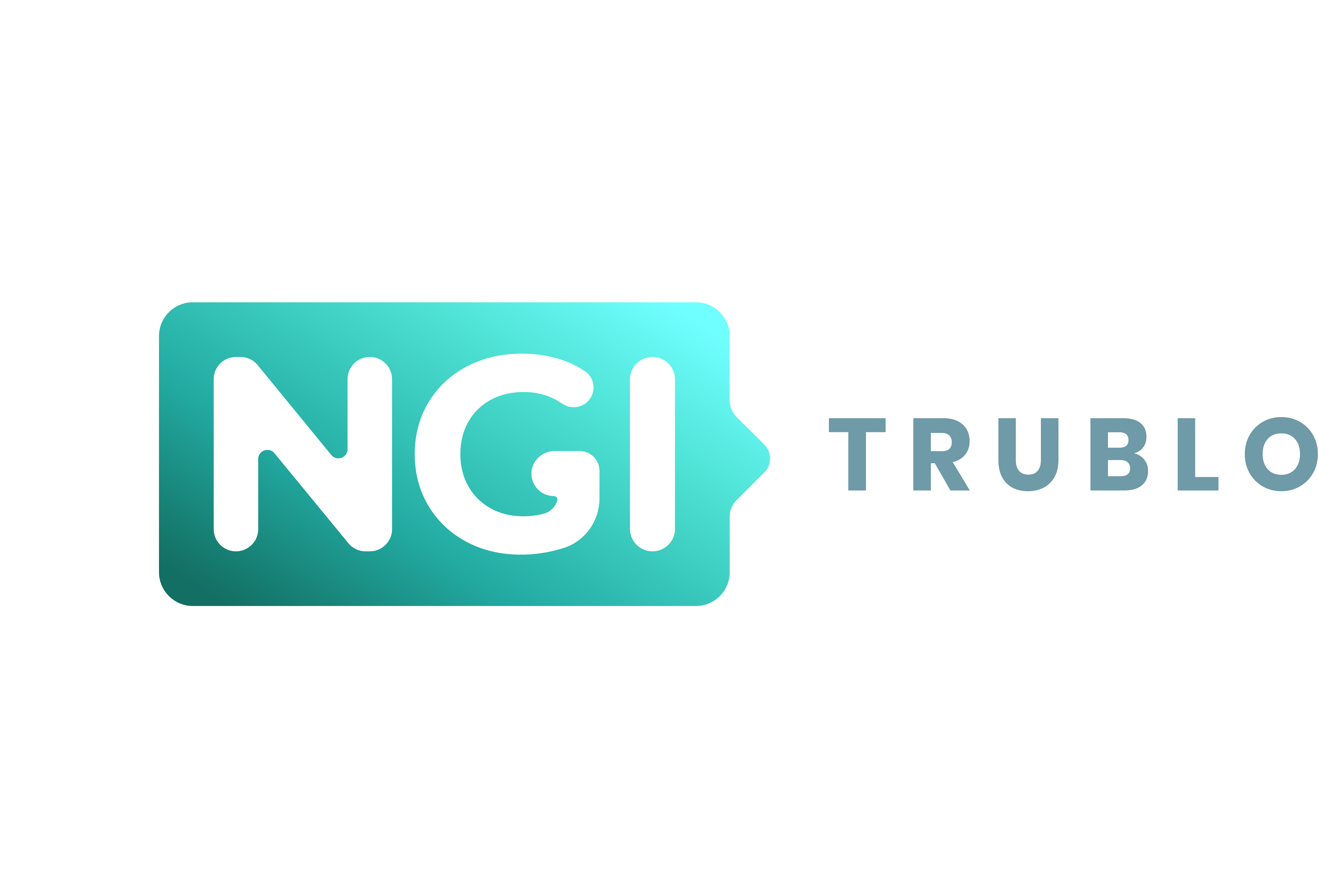Five Minute Blockchain – No. 54
09.05.2023
Estimated reading time: 7 min 55 seconds
QUOTES OF THE WEEK:
“Given the proliferation of AI models being released these days, do we need a sort of Linnean system (i.e. kingdom, phylum, class, order, family, genus, species) to classify and make sense of the space?”
Situational awareness: The discussion about trustable content is as relevant as ever. However, the focus has shifted from decentralised blockchain architecture towards anticipating the many changes of “new” content coming through generative AI. So many areas of work might be affected. But what are the risks, and what are the market effects?
One thought: How can this be an opportunity for the EU? Currently, the perspective is that most future technologies will come from a few substantial-tech companies (Open AI/Microsoft, Google, etc.) But a big part of using AI is how it is deployed, how it is regulated and how the technology is used for economic growth. This week a senior Google engineer wrote an internal memo that open-source AI could outpace both Google and Microsoft and lead to a much broader, new tech world in the next ten to twenty years.
TRUST
“Sparks of General Intelligence”
Noteworthy: A scientific article concludes that the newest version of GPT-4 shows “sparks of “artificial general intelligence” or, in short, AGI. The researchers conclude:
“We demonstrate that, beyond its mastery of language, GPT-4 can solve novel and difficult tasks that span mathematics, coding, vision, medicine, law, psychology and more, without needing any special prompting. Moreover, in all of these tasks, GPT-4’s performance is strikingly close to human-level performance, and often vastly surpasses prior models such as ChatGPT. Given the breadth and depth of GPT-4’s capabilities, we believe that it could reasonably be viewed as an early (yet still incomplete) version of an artificial general intelligence (AGI) system.”
AI can fool voice verification systems
Exclusive by The Guardian:
“Using just four minutes of audio, a Guardian Australia journalist was able to generate a clone of their own voice and was then able to use this, combined with their customer reference number, to gain access to their own Centrelink self-service account.”
Background:
Centrelink and the Australian Taxation Office (ATO) both give people the option of using a “voiceprint”, along with other information, to verify their identity over the phone, allowing them to then access sensitive information from their accounts.
NPR (National Public Radio): Elon Musk threatened to reassign NPR’s Twitter account
Comment from “Daring Fireball” on this story:
“This is a shakedown, pure and simple. What a message to big brands and celebrities: stop posting to Twitter, and they’ll reassign your longstanding username.
It’s bizarre that Musk thinks this might prompt NPR to start posting to Twitter again when the only rational reaction is to feel assured that walking away from Twitter was the right move.”
Twitters Verification Fiasco might end in a US court
Before the Elon Musk take-over, Twitter provided a blue verification checkmark to users with many followers, journalists and celebrities. Then the company tried to make verification a subscription business, but interest was low. Then many celebrities got their blue checks back, which created the impression that the stars did, in fact, pay – which was not the case. Wired reports that giving such an impression for marketing is forbidden in the US.
How Google AMP Ruined the Trust of Publishers in the Company
In 2015 Google started a new standard called “Accelerated Mobile Pages” AMP. The key idea was to speed up news content to load faster for quick display in search results, specifically on mobile devices. As of 2023, the technology has, by and large, faded away. Publishers do not care, and even Google seemingly has given up on AMP.
Why?
“…AMP came with huge tradeoffs, most notably around how all those webpages were monetised. AMP made it harder to use ad tech that didn’t come from Google, fraying the relationship between Google and the media so severely that AMP became a crucial component in an antitrust lawsuit filed just five years after its launch in 2020 by 17 state attorneys general, accusing Google of maintaining an illegal monopoly on the advertising industry.
CONTENT
Spotify cleans thousands of AI-made songs
The music streaming platform found AI-made songs connected to potentially fraudulent listening numbers. If successful such as deception would mean that Spotify would have to pay real money for fake listening.
Learn Prompting
Before forming an opinion about generative AI, we should start using the new technology. The goal should be to determine what the technology does well and where the limits are. Wired US has a list of links pointing to resources where you can learn:
Learn Prompting (free)
Free course teaching how to write prompts at different levels.
How to take your prompts to the next level (Wired)
Comprehensive article with examples of how to enhance prompts.
Run by technologist Linus Ekenstam, it features a host of useful AI-related material, covering tutorials on getting the optimum results from these tools and crafting the smartest prompts”. (Substack, some posts free, some only for a subscription.)
A generative ML model for icons.
Scientific paper on how to use a generative AI model to generate Icons.
LINK
Analysis: The costs of training LLMs
Training AI platforms means you need to have a big budget for computing resources.
“Navigating the High Cost of AI Compute”:
“…We’ve seen many companies spend more than 80% of their total capital raised on compute resources! In this post, we try to break down the cost factors for an AI company. The absolute numbers will of course change over time, but we don’t see immediate relief from AI companies being bound by their access to compute resources.”
Google is expected to demonstrate new AI platforms this week
At Google I/O, the search company will present PaLM 2, the latest AI development platform. PaLM 2 will include more than 100 languages, according to internal documents viewed by CNBC. The new AI platform will be used for coding, math, creative writing and analysis.
Adobe Firefly AI
Adobe Firefly is a new offering bringing the capabilities of generative AI to Adobe software products. Firefly enables users to generate images and text effects from descriptions, and Adobe says the platform is trained content licensed or out of copyright.
IBM introduces WatsonX, its own AI platform
“IBM, like pretty much every tech giant these days, is betting big on AI. At its annual Think conference, the company announced IBM Watsonx, a new platform that delivers tools to build AI models and provides access to pre-trained models for generating computer code, text and more.”
Amazon buys search engine “Snackable AI”.
The technology will be used for podcast projects, enabling the discovery of people, topics, etc.
BLOCKCHAIN
Visa: “Learning by Doing” critical for the long-term success of digital currencies
“Visa has developed a programmable finance platform designed to help Brazilian farmers better negotiate contracts.”
“…Visa presented its solution for the Banco Central do Brasil’s central bank digital currency (CBDC) competition, the Real Digital LIFT Challenge. The prototype consists of a programmable finance platform for small and medium-sized businesses (particularly farmers), which allows tokenising sale contracts into NFTs and auctioning them to global investors. Microsoft, Sinqia, and Agrotoken were also part of the submission.”
Mastercard introduces Crypto Credentials to increase trust in blockchain technology.
“Mastercard says Crypto Credential has been developed to “establish a set of common standards and infrastructure that will help attest trusted interactions among consumers and businesses using blockchain networks”.
The standards will help users verify blockchain-based transactions, with Mastercard also providing the technology necessary for those wishing to interact across Web3 environments. The firm says trust is “critical” if blockchain is to reach its full potential, while a lack of robust protections and standards has often eroded the trust of consumers, businesses and governments.”
Goldman Sachs, Microsoft, Deloitte and other companies will use a blockchain platform to link financial applications.
Digital Asset has developed the system, which will be called Canton Network.
A group of firms including Goldman Sachs Group Inc, MicrosoftCorp, Deloitte and Cboe Global Markets Inc are joining a new blockchain system aimed at linking disparate institutional applications, potentially encouraging broader adoption of distributed ledger technology in financial markets.
Everledger bankrupt
Everledger was an Australian company that hoped to use blockchains to track provenance of diamonds, other precious gems, fine wines, and other luxury goods. Things apparently didn’t pan out, though, when an investor’s planned funding fell through and the company was placed into voluntary administration.
Everledger had in the past raised US$37 million in funding. AUD$3 million (~US$2 million) of that funding came from the Australian government’s blockchain grants program in 2021.
SHORT LINKS
- Italy lifts ban on ChatGPT after data privacy improvements (Deutsche Welle)
- With Sandbox and Decentraland looking static, crypto investors are looking for other credible alternatives (Crypto News Flash)
- PayTM, India’s leading mobile payment platform, reported a surge in revenue and reduced its losses by 57%. (TechCrunch)
- Goldman Sachs found that 62% of family offices are neither invested nor interested in crypto. In 2021 the percentage of wealthy people not interested in crypto was much lower, at 39%. (The Block)
- “You can now create a shitcoin in less than 23 seconds” (Cointelegraph)
Thank you for reading. If you have questions or suggestions, please get in touch with us via info@trublo.eu.


0 Comments